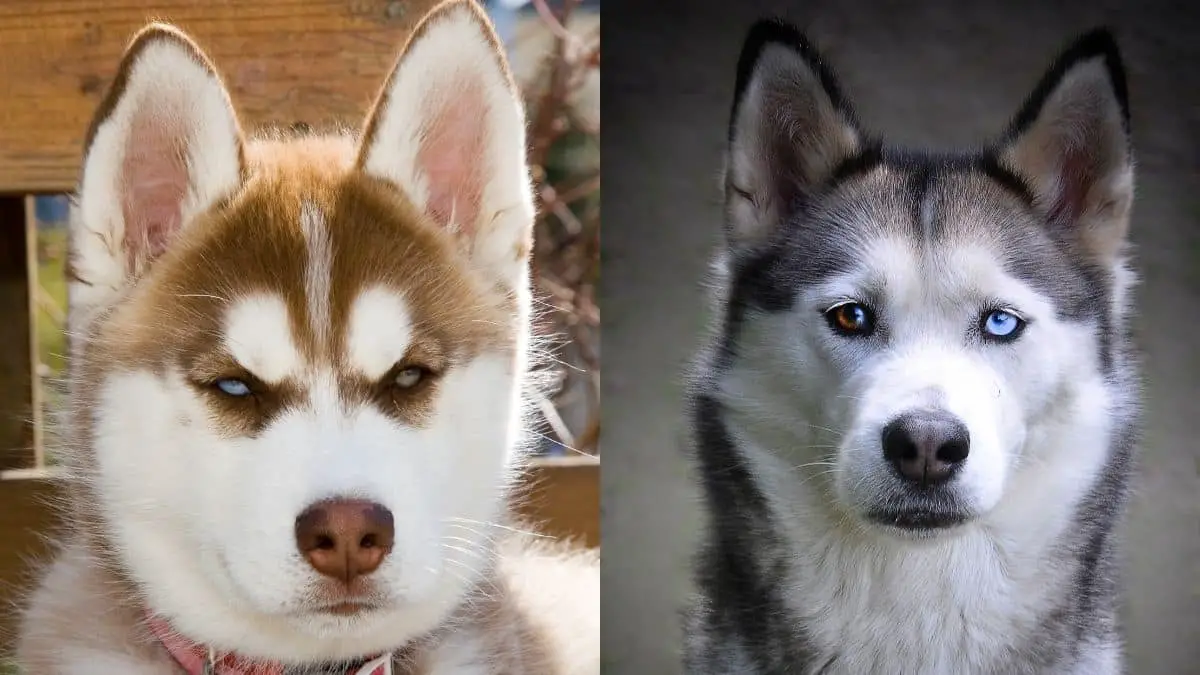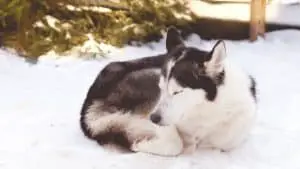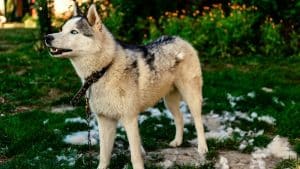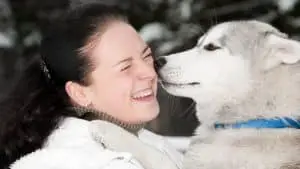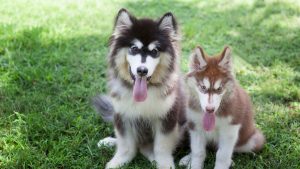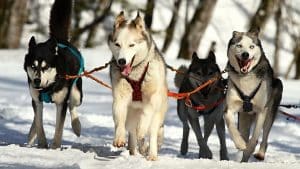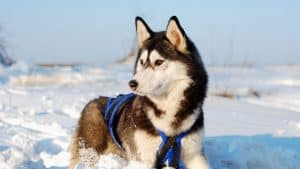Alaskan Husky vs. Siberian Husky: What’s the Difference?
Many dog breeds are often confused with one another. Whether this confusion is because of similar appearances or similar origins, it stands especially true to Alaskan Huskies and Siberian Husky. Coupled with the Alaskan Malamute, these three breeds are exceptionally identical yet very different.
The breeds differ not only in their originating countries but also in appearance, temperament, and even grooming. If you love dogs and are especially a fan of Huskies, you will enjoy this article. This article will learn the differences between an Alaskan Husky, a Siberian Husky, and an Alaskan Malamute.
Table of Contents
An Ultimate Comparison of the Breeds
Given below is a table that compares the three similar yet different breeds. The table covers all essential topics that set the three breeds apart. You will find a detailed discussion of each key difference in the later sections.
| Alaskan Husky | Siberian Husky | Alaskan Malamute | |
|---|---|---|---|
| Originating Country | Alaska (North America) | Siberia (North Asia) | Alaska (North America) |
| Weight (Males) | 40-60lbs | 45-60lbs | 85-100lbs |
| Lifespan | 10-14 years | 10-14 years | 10-12 years |
| Coat Length | Short to medium | Medium to long | Long |
| Socialization | Prefer running in packs but do not socialize as much | Very friendly towards other dogs | Might get aggressive towards dogs of the same sex |
| Behavior | Tends to jump over fences and dig | Tends to try to escape and hunt wild animals around the house | Tends to chew things and dig |
| Energy Levels | Extremely high, almost mechanical | Extremely high, slightly lower than the Alaskan Husky | High, slightly lower than the Huskies |
Meet Two Similar yet Different Breeds: Siberian Husky and Alaskan Malamute
When you look at a Siberian Husky and an Alaskan Malamute, it is easy to confuse the two. The two breeds look exceptionally similar and come under the same category of working dogs. Even if the breeds look similar, have thick double coats, and pull sleds, they are significantly different.
The Siberian Husky Club America points out another similarity between the two. The association points out that both the breeds’ tails are thick and curled over their noses when they lay in cold weather. They do this to warm the air that they are breathing.
Regardless of the similarities, these breeds are different. They have very different physical traits, temperaments, grooming techniques, and origins. Both the breeds are mistakenly called wolves due to their wild ancestors. However, both the breeds are carefully bred to have specific traits and attributes.
Commonly Confused Breeds: The Alaskan Malamute vs. The Siberian Husky
As mentioned in the previous section, Alaskan Malamutes and Siberian Huskies are two similar, yet different breeds, the differences between the two are subtle. In this section, we will discuss a few things that set the two breeds apart.
Origins
Both the Alaskan Malamute and the Siberian Husky come from unforgiving and icy environments. However, even the name is enough to suggest that the two breeds come from two different continents. While the Siberian Husky comes from Northern Asia, the Alaskan Husky comes from Northern America.
The Siberian people bred the Siberian Husky to be the primary mode of transportation. It was expected of them to pull light loads for long distances. They were forced to grow in icy conditions with scarce food availability. Therefore, the breed adapted an efficient method of living. They consume and work to zero excess to produce zero waste.
The Alaskan Malamute, on the other hand, was bred by the Mahlemut tribe in Northern America. Similar to the Siberian Huskies, they were brought up in starvation conditions in freezing weather. However, they were not bred to be the mode of transportation. They were used to pull heavy loads for short distances. They were bred to be hunting dogs for the tribal people.
The Siberian Husky has always been a well-preserved breed saved through many chances to breed it with other wild breeds. However, the Alaskan Malamute could hardly make it. It was only due to the strict preservation by the Mahlemut tribe that a few of the pure Alaskan Malamute dogs were saved during Alaska’s gold rush.
Physical Attributes
Due to similar breeding conditions, both breeds have similar physical attributes and working habits. The Siberian Husky and the Alaskan Malamute can pull sleds with their effortless and smooth movements. However, when looked closely, there are some key physical differences between the two similar breeds.
Coat
Thanks to the harsh winter that they were bred in, both the breeds have thick double coats. They have a thick layer of hair even between their toes to protect them from the snow they pulled sleds on.
To begin with the differences, the Siberian Husky’s coat is of a similar length throughout the body’s length. The texture is even and does not change for even a centimeter over the body. The Siberia Husky is known for its smooth, flat-falling coat.
The Alaskan Malamute, on the other hand, has an uneven coat. The coat tends to be longer over the neck and shoulders, over the rump, and down the back. The texture tends to be a little rough throughout the body.
Snout
If you look closely, you will be able to tell the difference between an Alaskan Malamute and a Siberian Husky by only looking at their heads. The Siberian Husky’s snout is generally of medium width, while the Alaskan Malamute typically has a huge snout.
Ears
The ears of both breeds are significantly different too. The Siberian Huskies are said to have an issue with their conformation ring. Therefore, they have high set ears that point directly up. On the other hand, the Alaskan Malamute also has ears towards the high set spectrum, but they tend to point slightly forward.
Eyes
Siberian Huskies are known for their piercing blue eyes. Their eyes’ color and depth are what sets them apart from most other similar breeds, the Alaskan Husky, for example. If a breeder sees a Siberian Husky with the stereotypical piercing blue eyes, they would be glad. However, an Alaskan Malamute with blue eyes would be disqualified to have issues in their vision.
Size
Siberian Huskies tend to be nimble and light since they were bred to walk for long distances. A female Siberian Husky can weigh between 30 and 50 pounds, and a Husky male weighs about 45 to 60 pounds.
Alaskan Huskies were meant to carry heavyweights. They are, therefore, strong and big. A female Malamute can weigh around 75 pounds while the males weigh about 85 pounds. This is the perfect size for a freighting dog.
How to Spot the Difference Between an Alaskan Husky and a Siberian Husky
We learned about the basic differences between the Siberian Husky and the Alaskan Malamute in the previous section. However, to make things even trickier, there’s another breed that is similar to the two previously compared breeds – the Alaskan Husky.
Even though the names and looks are very similar, there are huge differences between the Siberian Husky and the Alaskan Husky. It would be beneficial to remember, however, that breeds are related to one another. The Siberian Husky is a pure breed dog that is cross-bred and differently brought up to form the unregistered breed, Alaskan Husky. This is why there are many similarities between the two breeds.
Firstly, the purposes served by both the dogs are slightly different. While the Alaskan Husky is bred to be entirely devoted to sled pulling, Siberian Huskies are also used for show purposes.
The Alaskan Husky is bred carefully to produce the best working dog possible. They are technically pedigreed and purposefully bred to be a powerful working dog. However, due to the cross-breeding, Alaskan Huskies are not considered to be pure breed dogs. On the other hand, Siberian Huskies are not as powerful and are considered to be pure breed dogs.
Even though Siberian Huskies were bred in extreme conditions, Alaskan Huskies generally have a more muscular build and longer endurance. Siberian Huskies had to pull sleds for long distances at near-starvation conditions. However, Alaskan Huskies are expected to last for even longer distances.
Due to their more muscular build and longer endurance, Alaskan Huskies are best preferred for dog-sled races. Siberian Huskies, on the other hand, tend to be used for show purposes as well.
Size and Appearance
Even though the differences are almost negligible, Alaskan Huskies tend to be a little shorter than Siberian Huskies. A Siberian Husky male weighs between 45-60 pounds, and the female weighs about 35-60 pounds. An Alaskan Husky male can weigh anything between 40-60 pounds, and a female weight about 35-48 pounds.
Since Siberian Huskies have seen a change in their breeding in recent years, they have turned into championship-quality dogs. This is why they are built a little heavier than Alaskan Huskies that are built to be a little leaner because they are bred to be hard-working and heavyweight lifting dogs.
The coats of Alaskan Huskies could be on any color with any marking. Their coats are generally kept short for sled pulling. Siberian Huskies, too, can be of almost any color and marking, which is rare among registered breeds. The difference between the two breeds is that Siberian Huskies have longer coats that are not generally trimmed for sled pulling.
Temperament
Both the breeds are decedents of wolves and therefore have fiery looks and possess high energy. However, their lineage does not ensure that both breeds have similar temperaments. The change in temperament comes from the different purposes for which they were bred.
Even though Siberian huskier have initially been bred to be hunting dogs, they have been fine-tuned ever since they have become a registered breed. If you domesticate a Siberian Husky, you will often see the dog escaping and running after other pets and wildlife in and around your house.
Siberian Huskies do not prefer being domesticated; however, they are more complacent than Alaskan Huskies, allowing them to be good pets.
Alaskan Huskies work on the ‘all work no play’ principle. They require extreme levels of exercise since they are loyal to sledding. You will often see an Alaskan Husky not willing to stay indoors. These dogs prefer being in the wild, running over fences like a deer, or even digging holes like rabbits.
You will never find a Husky that is not vocal. They do not like barking. However, they are fond of howling.
Shedding and Grooming
Both the breeds are heavy-shedders. Therefore, seasonal changes can be extremely difficult for any Husky owner. However, if the Huskies live in a cold-round-the-year climate, they do not shed as much. They are meant to live in the cold and warmer climates that do not suit their double-coated thick fur.
Grooming and shedding are similar for both the Alaskan and the Siberian Husky. However, due to the longer hair and show purposes, you might have to groom a Siberian Husky more often than an Alaskan Husky.
Although Alaskan Huskies are not eligible to be presented in the breed-specific show, you can use them for sporting purposes. If you plan to do that, you will have to keep their coat short. Show Siberian Huskies, however, require their coats to be trimmed in a specific manner to make them stay presentable.
Health Problems
Both the Alaskan Husky and the Siberian Husky were brought up in harshly cold and mountainous climatic conditions. Even in such harsh conditions, they are expected to pull sleds for long distances. Resultingly, most Huskies are very hardy. You can expect a Husky to live up to their mid-teens.
Both the breeds, however, are prone to gradual vision loss or progressive retinal atrophy. They can also catch skin issues and hypothyroidism easily. Some Huskies can also be genetically deaf. Huskies can also catch other obesity or bone-related issues if they do not receive proper exercise.
The one health problem that is exclusive to Alaskan Huskies is Alaskan Husky Encephalopathy (AHE). This is an incurable neurological issue that doesn’t allow them to process the thiamine that they receive from their food. The presence of this problem can be identified through some genetic tests done on Alaskan Husky puppies.
Alaskan Malamute vs. Siberian Husky vs. Alaskan Husky: Which is the Easiest to Groom?
The ease in grooming increases according to the descending size of the three breeds.
While the Alaskan Malamute is not usually used for show purposes, its sheer size makes grooming a little difficult. The Alaskan Malamute generally has longer fur than any of the Huskies, but they shed equally. This is why they need extensive grooming; otherwise, your entire house will be full of hair. Their size makes that trimming and grooming a little challenging.
Siberian Huskies are likely to be used as a show-dogs. Resultingly, they require to be groomed in very specific ways that allow them to be presentable to an audience. Siberian Huskies will shed less if they are not subjected to a lot of climate change. Their medium-sized coat requires some time to groom, though.
Alaskan Huskies are the easiest to groom. They have the shortest coat among the three breeds and are generally not used for show purposes. Alaskan Huskies require very little grooming unless they are used for show purposes, for which they will have to get their coats trimmed to be shorter.
Alaskan Husky vs. Siberian Husky: Which One is Better for You?
As mentioned in a previous section, Alaskan Huskies and hybridization of Siberian Huskies. Therefore, most of the two breeds’ features are similar. However, both the breeds serve different purposes that determine which one will be better for you.
Alaskan Huskies are bred to be sled dogs. Therefore, they are more powerful, more athletic, and therefore need more exercise. They prefer exercising outside over sleeping inside. Alaskan Huskies must stay at a place where it is constantly cold and where they can get enough physical stimulation to tire them out.
It is important to remember that Alaskan Huskies make great play-companions for young adults. They also grow better at farms or places where they can run around chasing wild animals. It is important not to keep them around small pets since that might initiate their hunter instincts.
Siberian Huskies required almost a similar amount of exercise, but they are much more friendly than the Alaskan Husky. They can also be used for show purposes and are, therefore, great if you like to domesticate a show dog. While Siberian Huskies are extremely strong, they are not as powerful as an Alaskan Husky.
The breed that you prefer depends on the place you live and the purpose you want to get a Husky.
Summing Up
The three breeds: the Alaskan Husky, the Siberian Husky, and the Alaskan Malamute, are extremely similar. The basic distinctions between each breed are very subtle and are often ignored by the general person.
All these breeds are extremely powerful and have gone through years of breeding and training to be the most robust dogs of the cold. Huskies make incredible companions if you live in the right weather conditions and can provide them with enough exercise.

